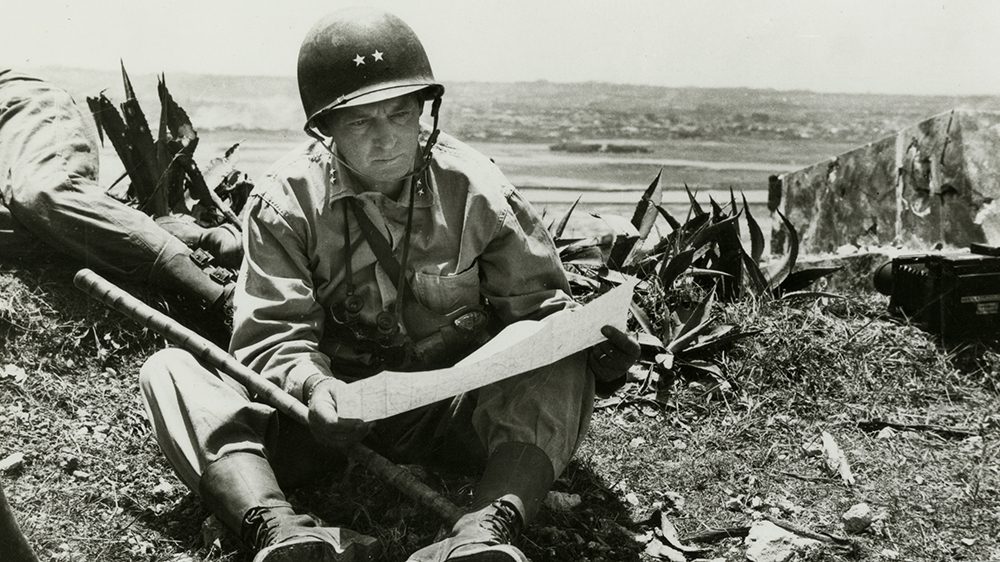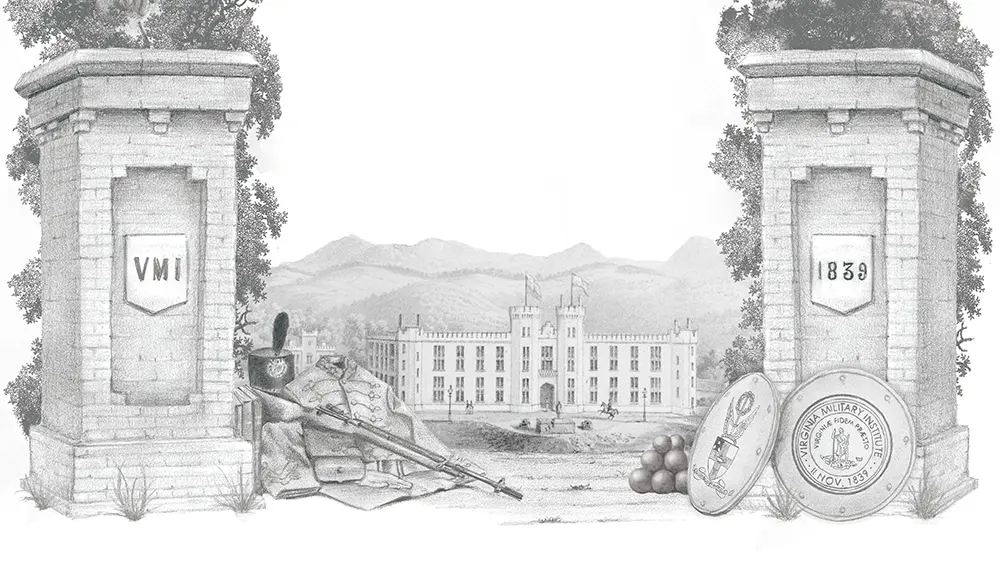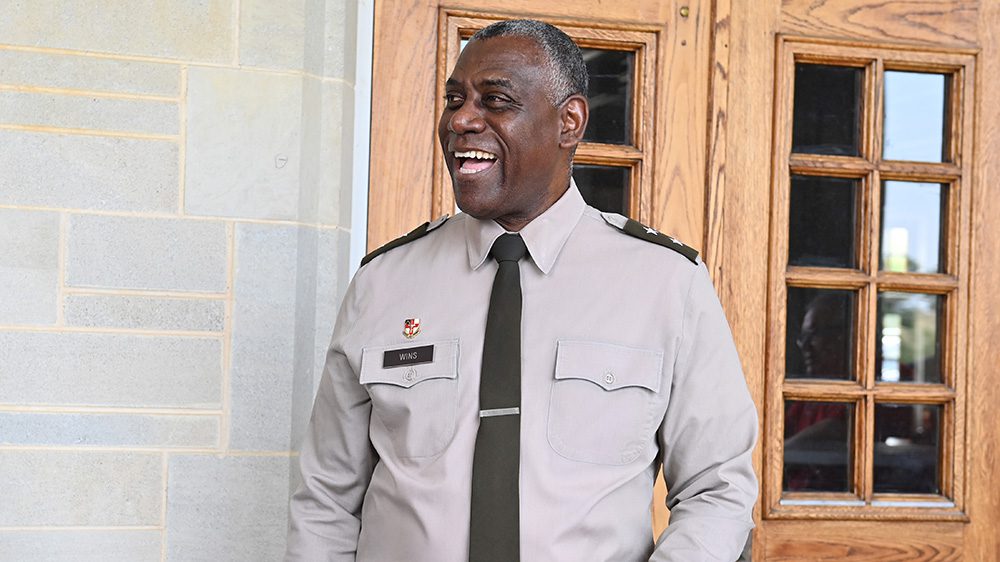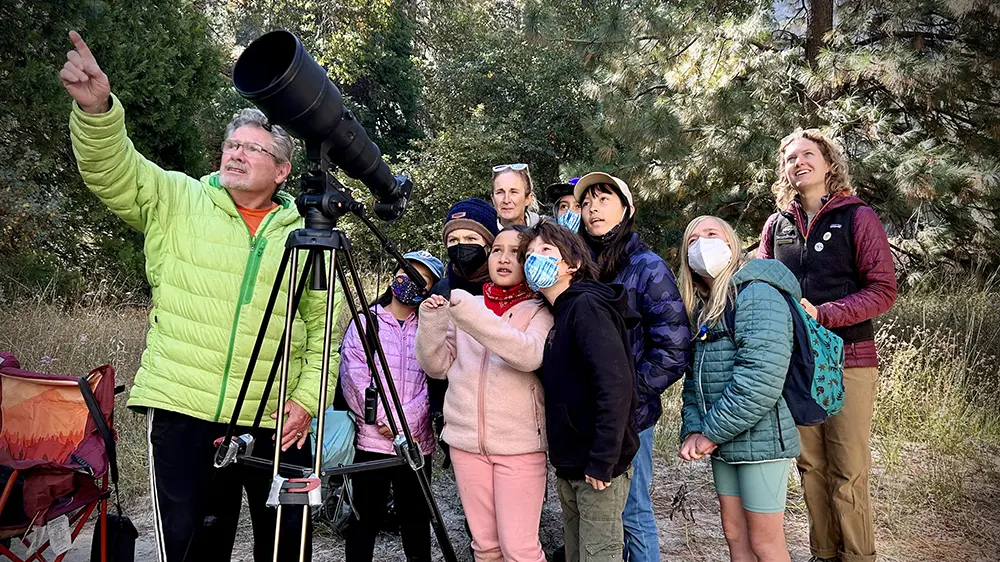U.S. Marine Corps Gen. Lemuel “Lem” Cornick Shepherd Jr., Class of 1917, grew up in Norfolk, Virginia, and was the grandson of a Confederate veteran.
Named for a great-uncle killed at Chancellorsville, Shepherd played football and ran track at VMI. He was busted from his rank of corporal as a 3rd Class cadet and remained a 1st Class private at VMI. He graduated early with some of the Class of 1917 so he could enlist and join the World War I effort in Europe. He received a Marine Corps commission in the reserve while still a cadet, and by mid-May of that year, Shepherd was at Parris Island for a 2-week shortened Basic Course. He spent that time on the rifle range.
By June, he was in France while the majority of his classmates were receiving diplomas at VMI. Shepherd had earned a degree in civil engineering, and he was assigned to lay out the tent camp when his unit arrived in France.
Over the next year, Shepherd trained his platoon, which was part of the 55th Company, 5th Marine Regiment. The 5th was part of the 2nd Infantry (Rainbow) Division, which included a Marine Brigade.
On June 3, 1918, Shepherd led his company as executive officer toward what became the Battle of Belleau Wood. This was in the middle of the French line that needed reinforcements to halt the German Spring Offensive of 1918. Shepherd could see Germans, and an attack was imminent. Shepherd suggested to his company commander that he check on their outpost located on a hill to their front. With permission granted, Shepherd and an orderly ran through heavy artillery fire to the outpost. Their numbers made 14 at the outpost, and soon, they were being attacked by an estimated 500 Germans. Shepherd had his men hold their fire until the enemy was close, and then he let loose. This halted a pivotal attack, but Shepherd was wounded in the neck in the process. He knew if he could spit, then the wound had not pierced all the way through, and he’d be OK. He could spit. Shepherd refused evacuation.
The next day, Shepherd’s company commander was killed, and he was ordered to take command. As he moved under fire toward the command post, Shepherd was wounded seriously in the leg. He lay exposed for a long time before he was rescued and carried to the rear, then evacuated. By August, he was back with the 55th Company, where he participated in the all-American offensive of the war in the salient Battle of St. Mihiel. This was followed by the Meuse-Argonne offensive. Shepherd was wounded here again and finished the war in the hospital.
For his actions at Belleau Wood, the 21-year-old Shepherd received the Navy Cross, Army Distinguished Service Cross, Purple Heart, and the French Croix de Guerre.
Following his service in World War I, Shepherd was an aide to the commandant of the Marine Corps, Maj. Gen. John Archer Lejeune. Lejeune went on to become superintendent at VMI. Shepherd loved horses and rode daily with Lejeune. After time with Lejeune, Shepherd spent a lot of time in China with the 15th Marines and later the 4th Marines, mostly in command assignments. Like U.S. Marine Corps Lt. Gen. Lewis B. “Chesty” Puller, Class of 1921, he spent 4 years in Haiti in the early 1930s.
In June 1937, he took command of the 2nd Battalion, 5th Marines at Quantico. His battalion was used as a test battalion, especially with amphibious landings. When World War II came, Shepherd was well prepared for fighting in the Pacific. He was foremost a warrior, leading from the front. At the start of World War II, he commanded the 9th Marine Regiment, and Shepherd trained them hard. They were sent to Guadalcanal late in 1943, and he was promoted to brigadier general and assigned as assistant division commander, 1st Marine Division. He would help lead the landings on New Britain via Cape Gloucester.
Shepherd planned many of the operations on New Britain and, for a time, was over Puller. Both liked to be where the action was. Shepherd commanded the area around Borgen Bay, where the heaviest fighting occurred. Success came when his men secured Aogiri Ridge and then held off a Japanese counterattack using 37MM guns and grapeshot, which proved very effective in the jungle. After New Britain, Shepherd took command of the 1st Marine Provisional Brigade and trained his men for landings to retake Guam. He had two reinforced infantry regiments plus artillery. Shepherd watched as 10 of his amtracs were hit. The Japanese were defending the beach. Shepherd moved to the beach among the early waves and pushed his men forward. He would take his assigned Orote Peninsula. This was a tough jungle fight and would earn Shepherd a second star and command of the newly created 6th Marine Division.
Shepherd’s 6th Marine Division headed to Okinawa by mid-1945. His assistant division commander was U.S. Marine Corps Brig. Gen. William T. Clement, Class of 1914 (later lieutenant general), and his G3 was Lt. Col. “Brute” Krulak, who would work with Shepherd multiple times.
Four divisions were to land with Shepherd on the far left. He had to break through the Shuri Line dominated by Sugar Loaf Hill. It took two weeks of hard fighting before Shepherd’s men took that hill. His cousin, U.S. Marine Corps Lt. Col. Horatio “Monk” Woodhouse, Class of 1936, played a huge role and was killed by a sniper taking the town of Naha. The Okinawan rains were torrential, and the fighting was arguably the worst of the war. The war ended soon after, and Shepherd’s division was sent to China to disarm and repatriate the Japanese in North China.
Following that assignment, Shepherd returned to Washington. U.S. Marine Corps Gen. Alexander Vandegrift was to retire as commandant of the Marine Corps, and Gen. Clifton Cates was selected over Shepherd as commandant. President Truman told Shepherd that he would follow Cates as commandant.
In the meantime, Shepherd headed the Marine Corps Schools; then, in June 1950, he was promoted to lieutenant general and given command of Fleet Marine Force, Pacific. Shepherd advised U.S. Army Gen. Douglas MacArthur regarding his audacious plan to land the Marines plus an Army division at Inchon. It was Shepherd who convinced MacArthur to take the resurrected 1st Marine Division with him.
Shepherd admired MacArthur and was close to him. MacArthur’s Inchon plan worked to perfection. Shepherd sat with MacArthur in Inchon harbor observing the landings. Both MacArthur and Shepherd visited Puller soon after as he raced toward Seoul. Shepherd made trips to the Marines as they moved near the Chosin Reservoir en route to the Yalu River. He saw captured Chinese and told MacArthur personally that he saw them. This was clear proof that the Chinese were in the war. MacArthur’s staff had ignored any findings of Chinese intervention in Korea, and this mistake would cost them dearly.
After Korea, Shepherd went on to become the 20th commandant of the Marine Corps. He created a general staff in the Marine Corps headquarters with a chief of staff and a G1, G2, G3, and G4. He also worked to set the Marine active structure at three divisions and three air wings, which became public law. As commandant, Shepherd was also given full control over all Marines, and he would report to the secretary of the Navy and not, as in the past, to the chief of naval operations.
He was the first Marine to sit with the joint chiefs of staff. He also raised money for an American monument to be placed at Belleau Wood. Shepherd never forgot those brave men with whom he served. Shepherd left as commandant in 1955 but stayed on active duty until 1959, serving as chairman of the Inter-American Defense Board. He coordinated the defense of 21 countries in Latin America that were members of the Organization of American States. When he retired in 1959, he had 42 years of government service.
In his retirement, Shepherd continued to serve the Marine Corps, always helping enlisted Marines. He also loved to hunt and was a member of the local Warrenton Hunt Club. Often, he would be delayed doing Marine business and had to catch up after the hunt began. Will Allison ’53, M.D., related a story that one day, as Shepherd rode his horse looking for other members of the hunt club, he met a farmer dressed in bib overalls. He said, “I’m General Shepherd, and would you know where the hunt club might be?” The farmer angrily replied, “I’m Private O’Banion, and you can get … off my land.” From that point on, O’Banion was a regular at all Shepherd socials. That’s how the general was. He respected straight talkers and loved Marines.
Shepherd was always a Marine, a soft-spoken Virginian with a Tidewater accent, a dedicated Episcopalian who said blessings before meals, and a proud VMI man. His close friend, Krulak, described Shepherd as a man of habits and a “spit and polish Marine.” He had tea every morning and a cold shower. Shepherd lived until 1990 and is buried in Arlington National Cemetery. On post, Shepherd’s memorial marker is located adjacent to Memorial Hall.




